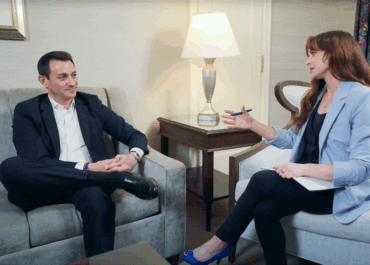Yet, Apple’s technology is based on an exclusive ecosystem. To be an Apple user, generally speaking, you must buy an Apple device (or in some cases, several of them…between me, my wife, and my kids we have 6). This contrasts with Google’s Android model, whose operating system integrates with a variety of smartphones and other devices.
Last year, Apple made headlines when it announced that starting in the fall of 2021, Windows and Android users will be able to join FaceTime calls. Presumably, Apple recognizes that limiting FaceTime to Apple devices means losing market share to competitive apps like Zoom or Microsoft Teams. By restricting access to FaceTime, the company was limiting its users, and in turn its own growth. Apple’s decision to open FaceTime to users of other devices and operating systems reflects a broader technology trend toward more open platforms and ecosystems.
In the finance world, we’re no strangers to exclusive technology platforms. Since the early 1980s, the idea of having a one-stop-shop platform has been ubiquitous on Wall Street. And while it’s common to see expensive ‘terminals’ all across trading floors, the middle and back office often lack access to these devices (and therefore, the data that is only available within the very same terminal ecosystem). Like Apple, these terminals have constructed an ecosystem where the barriers to entry are high. The product is a valuable resource, but not one to which everyone in the industry has access.
Of course, much has changed in the last 40 years (other than fashion). Today, financial firms want access to the tools and data they need in a way that is conducive to their workflows. In addition, they want to use platforms that are accessible to a broader universe within the industry–in other words, where the front, middle, and back offices can all collaborate.
At Symphony, we are believers in an open approach. We operate similarly to Android, in that you don’t have to come onto our platform to use our services. We embed our capabilities onto our clients’ tech stacks, rather than insisting that they adopt ours. Symphony also integrates solutions from outside of our four walls, rather than building everything ourselves. By partnering and collaborating with fintechs, clients, and other organizations, we have become a marketplace where clients can select and implement the solutions that best suit their needs. Finally, as mentioned by our CIO Dietmar Fauser in a blog post last year, Symphony promotes inter-process interoperability. In addition to our existing client and server side APIs we will support the FDC3 standard and expose an FDC3 compliant interface in order to offer easier and more versatile integrations between desktop applications and Symphony.
Exclusivity has been a defining principle for brands like Apple–and this has, in many ways, been a successful strategy for the company. But at Symphony, we believe the future is about inclusivity. We are moving toward a world where technology is not a competitive advantage reserved only for those who can afford or access it, but a universally accessible tool that both levels the playing field and also allows companies and individuals alike to select the best-of-breed for their needs. Inclusiveness and openness is what enables this.

 Disney. Starbucks. Coca-Cola. Some iconic brands inspire such intense loyalty that they become part of enthusiasts’ identities. Perhaps the most compelling example in modern memory is Apple: millions of people around the world are deeply devoted to the company’s products, and their dedication (and willingness to pay a premium for their hardware) has made Apple one of the most successful companies in history.
Disney. Starbucks. Coca-Cola. Some iconic brands inspire such intense loyalty that they become part of enthusiasts’ identities. Perhaps the most compelling example in modern memory is Apple: millions of people around the world are deeply devoted to the company’s products, and their dedication (and willingness to pay a premium for their hardware) has made Apple one of the most successful companies in history. 
